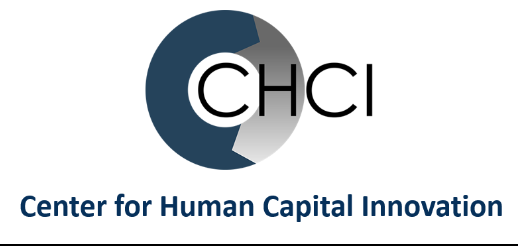
Make Your Year-End Performance Reviews Meaningful
End-of-year performance reviews (and mid-term reviews, for that matter) are one of corporate life’s least loved rituals, typically despised by workers and managers alike. While it would be wonderful to get rid of them altogether, how would leaders determine pay, promotions, and developmental priorities?
Back in 2016, when abolishing performance reviews was all the rage, a 2016 CEB/Gartner study of 9,000+ employees across 18 countries revealed the following:
- Leaders that eliminated performance reviews struggled to determine performance-based compensation and promotions across teams.
- Employees lost trust in the process and assumed favoritism.
- Conversation quality dropped 14% and employees who believed pay reflected performance went down 8%.
Most organizations decide to keep mid-term and year-end reviews because they represent the only hope for differentiating performance, allocating compensation, and maintaining some objectivity when it comes to promotion decisions. Formal reviews can also preserve organizational memory, capturing wins and risks that get buried in the daily work. And they provide the documented, auditable record that boards, auditors, and courts expect, reducing legal and governance risk.
After unsuccessfully trying to eliminate traditional ratings in the mid-2010s, Goldman Sachs introduced a more explicit performance grading approach.
What made the difference this time around?
- Identifying underperformance and tightening year-end decisions (e.g., labeling up to 10% as underperformers).
- Blending continuous feedback with a sharper year-end barometer to address the need for a common yardstick.
While for most organizations, there is no substitute for the performance review, there are always better performance review practices that are not (forgive the pun) “performative.” Leaders need a practical view of what’s valuable and what needs to be fixed as well as how to make year-end reviews useful and meaningful for workers, managers, and the organization at large.
What To Avoid
In designing or redesigning a solid end of year performance review system, it’s helpful to start with a review of common pitfalls and points of failure.
- Timing mismatch Work happens continuously, but end-of-year performance reviews happen… well… at the end of the year. Even with a mid-term review, annual cycles can be gamed to reward good showmanship in Q4 while ignoring quiet compounding of good results throughout the year.
- Rater distortion Managers are inconsistent. Recency bias, halo effects, and “central tendency” (grading everyone the same) can overshadow actual performance.
- Process over purpose HR forms and calibration meetings (i.e., talent reviews) can become the main event, pushing coaching and decision quality to the margins.
- Ill-fitting metrics Many goals are inherited, obsolete, or too vague by year-end, leading to performative narratives rather than effective evaluations.
- Surprise factor When feedback appears once or twice a year, it can often feel arbitrary.
- Power imbalance Ratings feel like verdicts that workers can’t contest.
- Comp tie-in When feedback and pay are fused, people hear “raise” or “no raise” and miss the growth message.
- Time tax For managers and peer reviewers, writing long narratives for large teams is time consuming, especially when systems are clunky.
- Calibration theater To avoid the tendency of managers to inflate performance ratings, organizations often limit the percentage of workers who can fall into various ranges, leading to hours of energy-draining arguments over minor details.
- Risk of conflict: Many managers aren’t trained—or rewarded, for that matter—for delivering tough, specific feedback.
After former GE CEO Jack Welch published his bestseller, Winning, in 2005, the GE practice of stack-ranking (aka: forced ranking) became wildly popular among CEOs.
Don’t do it.
The consensus today is that it breeds competition over collaboration, damages trust, and drives away capable employees rather than improve performance. Instead, require leaders to explain why individuals in the same rating band receive different compensation, promotions, etc., referencing impact, unique skill sets, and market position.
Now, What Works
When it comes to performance reviews, it’s more than just what to avoid; there are plenty of positive tips and tactics that can be helpful in creating a successful employee review system.
- Keep mid-term and year-end reviews as decision checkpoints while redesigning them around outcomes, evidence, and year-long habits.
- Follow the “No Surprises” rule. Hold quarterly, or more frequent, documented check-ins (think 15 minutes, with a few key prompts: “What’s working? What’s not? What ideas do you have?”).
- Separate career development from the compensation whenever possible. No one can fully absorb feedback while waiting anxiously on news of their livelihood. These conversations have different objectives and different tones.
- End every review with 3-5 big commitments. Include one to build strengths and improve on what’s working, a performance risk to eliminate, and a longer-term growth objective.
- Train for candor by giving managers micro-scripts and practice scenarios for hard messages. Ask them to focus on specifics, such as what they observed, the impact, expectations going forward, and an offer of support.
- Clearly define success, document the organization’s must-win outcomes, and identify how each person will contribute. Tie ratings to objectives that link to outcomes and update them if organizational priorities change between reviews.
- Identify metrics to assess each objectives (e.g., cost savings, improved engagement scores, or desired retention rates for leaders) instead of vague descriptions. A narrative is okay as long as the facts still determine the ratings.
- Rate behaviors separately. Outcomes equate to what was delivered while behaviors describe how it was delivered (e.g., collaboration, judgment, and ethics). Both are important—don’t muddy them by combining them.
“Every current and former Microsoft employee I interviewed—every one—cited stack ranking as the most destructive process inside of Microsoft, something that drove out untold numbers of employees… If you were on a team of 10 people, you walked in the first day knowing that, no matter how good everyone was, 2 people were going to get a great review, 7 were going to get mediocre reviews, and 1 was going to get a terrible review,” says a former software developer. “It leads to employees focusing on competing with each other rather than competing with other companies.”
What About 360º Reviews?
When done well, 360° feedback fills in what’s missing from a manager’s perspective. Peers can have better visibility into the daily aspects of an employee’s performance, like responsiveness, meeting discipline, cooperation, and influence, that managers can miss. 360s also signal that collaboration is core to the culture instead of just extra credit.
Keep 360s light and specific—a short pulse from 6–8 raters, focusing on the behaviors related to your values. Weight the responses toward concrete examples instead of likeability scores, and keep reviewers confidential by sharing the overall themes of the insights with reviewees. Fold these inputs into reviews as behavioral corroboration while still prioritizing the manager’s judgment on outcomes.
Performance reviews are not going away, nor should they. In most organizations, though, they must evolve. Treat the annual review as a high-stakes summary of continuous management, not a once-a-year event. Ground judgments in strategy and evidence, inject a balanced peer perspective, and train managers to deliver clear, candid messages.
Depending on how long your performance review process has been in place and how much change is required, these practices will gradually break the dreaded ritual and replace it with something useful and meaningful, while simultaneously building trust.
What have you found most effective in your performance review process? What aspects do you think need to be changed? Leave a comment below, send us an email, or follow us on LinkedIn.


Leave A Comment